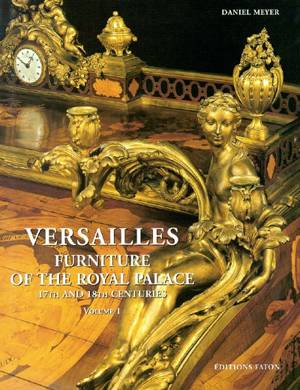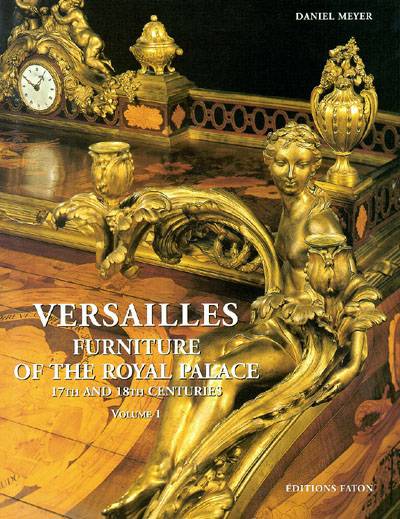
- Retrait gratuit dans votre magasin Club
- 7.000.000 titres dans notre catalogue
- Payer en toute sécurité
- Toujours un magasin près de chez vous
- Retrait gratuit dans votre magasin Club
- 7.000.0000 titres dans notre catalogue
- Payer en toute sécurité
- Toujours un magasin près de chez vous
Versailles, furniture of the royal palace
17th and 18th centuries
Daniel Meyer, Pierre Arizzoli-ClémentelDescription
A century of splendour and supremacy in the art of furniture-making in France
Louis XIV moved to Versailles in 1672. Some ten years later work on enlarging the palace and building the Hall of Mirrors had been completed. The Treaty of Nijmegen had confirmed the pre-eminence of France on the continent of Europe. In the palace, designed to match the King's aspirations, the decorative arts contributed to the creation of a world of splendour and prefection which was to set the fashion both in France and abroas. Between the late 17th century and the French Revolution, the finest masterpieces were made for Versailles and the supremacy of the French art of furniture-making was recognised by all the royal courts in Europe.
In the wake of the French Revolution the palace was more or less abandoned and its furniture dispersed.
It was not until after World War II that France rediscovered Versailles and the project of restoring the château and refurnishing it was undertaken.
Over the past fifty years patient research and huge financial efforts on the part of the French State and French and foreign sponsors have succeeded in bringing back to Versailles a large part of the original furniture. This has been supplemented when necessary by pieces of similar high quality, dating from the same period. Restored, like the decoration of the rooms, in accordance with the highest possible standards, the pieces of furniture have been returned to the places they occupied at a given moment during the successive reigns of Louis XIV, XV and XVI.
Until now, this prestigious collection of furniture had only partially been the subject of publications, For the first time, it is here presented as a whole, in two richly illustrated volumes.
The royal furniture - commissions for the Garde-Meuble de la Couronne and, for Louis XVI's reign, for the Garde-Meuble de la Reine - catalogued according to their intended use, with a special chapter devoted to the rarest pieces.
Furniture commissioned bu other patrons - the Dauphine, the Princes of the Blood, other royal princes and princesses, Madame de Pompadour, the Comtesse Du Barry, and various great lords and ladies holding positions at court - in order to compare styles more easily, they are grouped in two sections devoted to furniture made by cabinet-makers and that made by joiners.
In all 180 pieces or suites of furniture have been photographed, many of them with close-up details, sometimes showing pieces open or presenting their mechanism or secret compartments, in a way that visitors will never see them; over 550 photographs were thus taken, under exceptional conditions.
For each piece, the text provides the background of the commission when it is known, its description from a stylistic point of view, and its present location.
This publication has been prepared with all the care merited by its subject matter. On turning the pages, readers will, as it were, become the privileged visitors of a prestigious collection surrounded by the setting for which the pieces were created.
Volume I
By Daniel Meyer, Conservateur en chef honoraire au musée national du château de Versailles et de Trianon
Volume II
By Pierre Arizzoli-Clémentel, Directeur général de l'Etablissement public
du musée et du domaine national de Versailles et de Trianon
Spécifications
Parties prenantes
- Auteur(s) :
- Editeur:
Contenu
- Langue:
- Anglais
Caractéristiques
- EAN:
- 9782878440584
- Date de parution :
- 17-12-02
- Format:
- Coffret
- Dimensions :
- 320 mm x 250 mm
- Poids :
- 4228 g

Les avis
Nous publions uniquement les avis qui respectent les conditions requises. Consultez nos conditions pour les avis.






